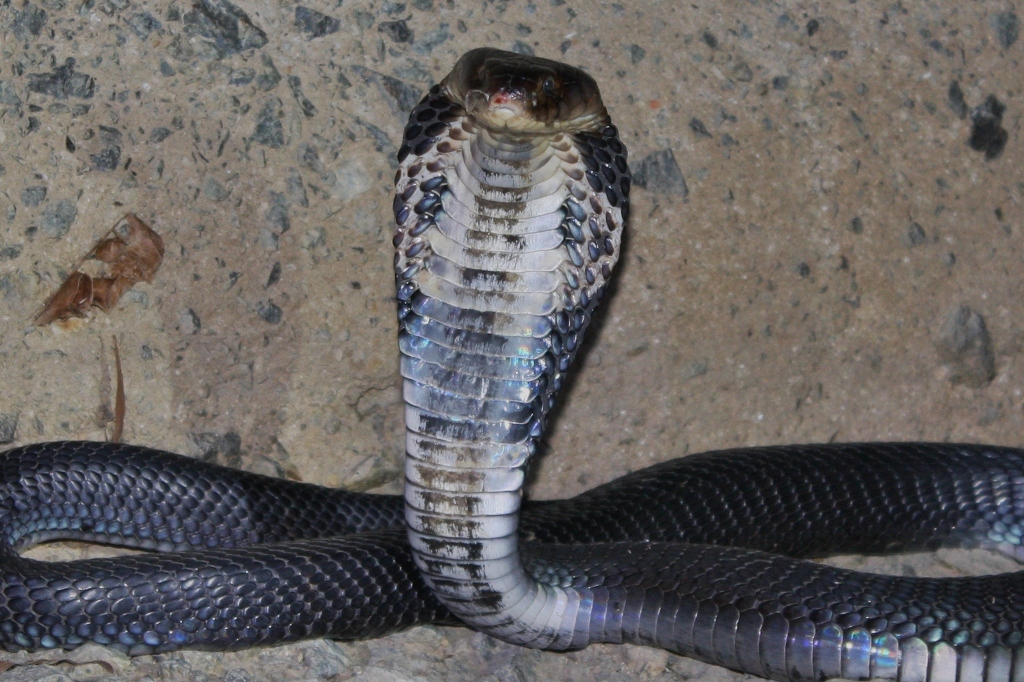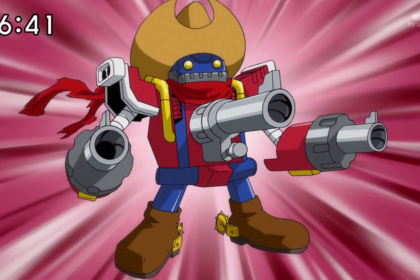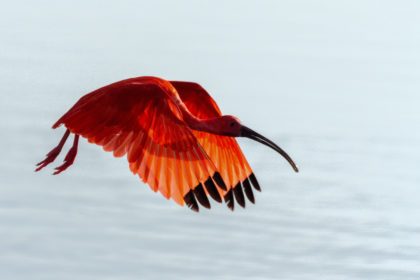Cobras are very venomous snakes that are famous for the threatening hood located on their neck. There are 28 known species of cobra, who are seen as “true cobras,” or genus Naja. Take a look below to see 27 more fun and interesting facts about cobras.
1. The king cobra, despite being called a “cobra,” isn’t actually a member of the Naja genus, or the “true cobra” family.
2. Cobras can be found in Africa and Asia, specifically, savannas, open woodlands, plains, rocky hillsides, forests and farming areas.
3. They live for a relatively long time. An average lifespan of a cobra is between 20 to 30 years, depending on the species.
4. The largest true cobra species if the forest cobra, Naja melanoleuca, which reaches up to 3.1 meters, or 10 feet, in length.
5. The smallest true cobra species is the Mozambique spitting cobra, Naja mossambica, which is about 1.2 metres, or 4 feet, long.
6. Cobras have round pupils and smooth scales.
7. They have specialized muscles and ribs in their neck that flare out when they feel threatened. They’re able to raise their body up, spread the hood and hiss loudly enough that they’ll scare off most predators.
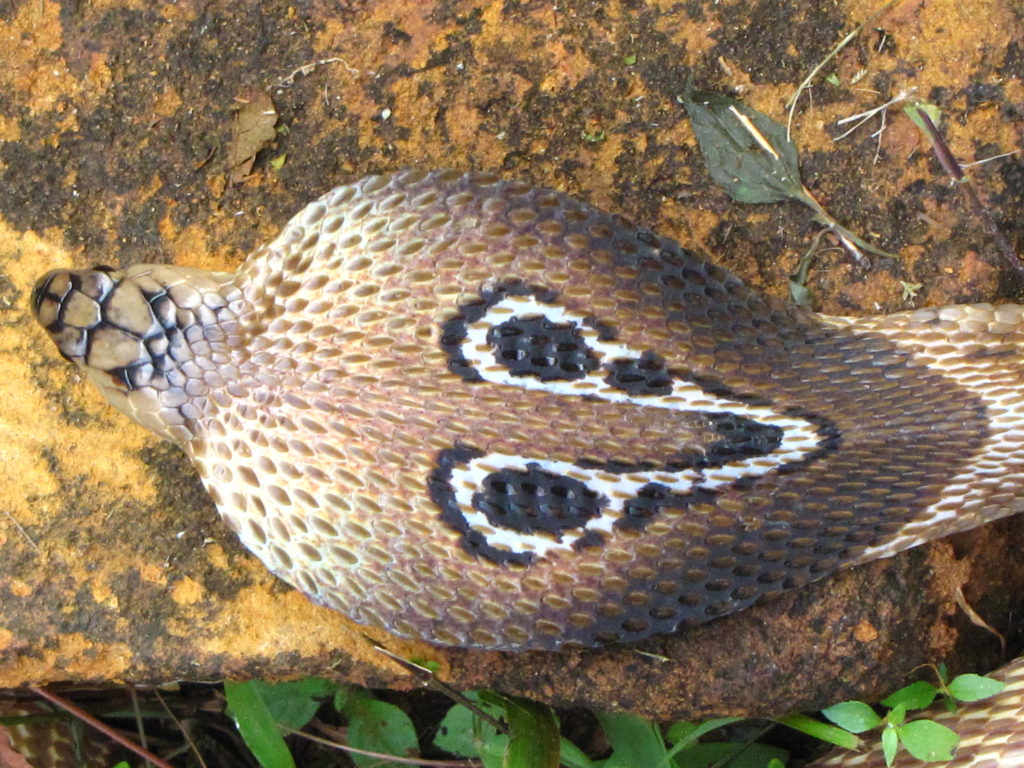
8. Cobras can come in various colors, some are black and dark brown, others are red, yellow and white.
9. They’re elapids, which means that they’re a type of poisonous snake that has follow fangs on its top jaw and at the front of its mouth.
10. They can be nocturnal or diurnal, it varies from each species.
11. They use their forked tongue to smell their prey. The tongue can move in and out, picking up the smallest odor particles on the ground and passing them over a smelling organ at the roof of its mouth called the “Jacobson’s organ.”
12. Like other venomous snakes, the cobra is extremely fast when it goes in for the kill.
13. Cobras capture their prey by feeling the vibrations on the ground and examining at what’s causing the vibration. If it feels like it could kill it, then it stalks the prey before going in for the kill.
14. A cobra’s venom has a neurotoxin that stops the victim’s breathing and heartbeat.
15. They’re carnivorous and they feed on other snakes, lizards, small mammals, birds and bird eggs. Cobras can eat pretty much any other type of snake, including other venomous snakes.
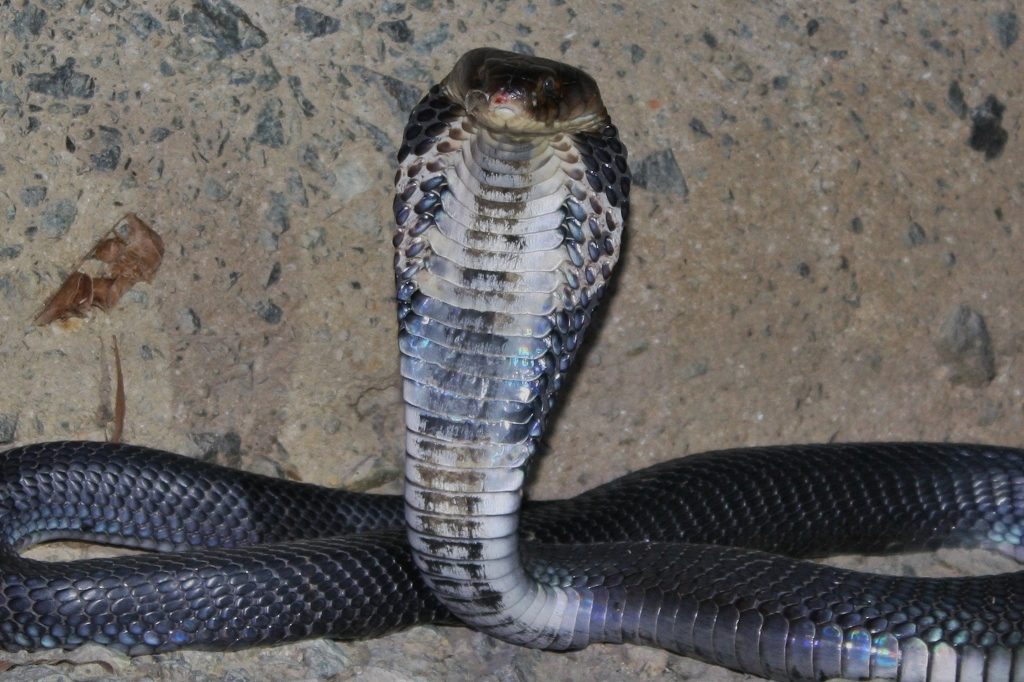
16. A cobra’s jaw has two independent bones that are loosely attached to its skull. This lets them swallow an animal that is wider than its head.
17. Their throat has small spikes that help it digest its food. The spikes pierces the prey as it moves down the throat. For example, when a cobra swallows an egg, the spikes break apart the shell, allowing the yolk and the egg white to slide down through the digestive system while the shell is regurgitated.
18. Cobras can go for days, sometimes months, without eating. It all depends on how large their last meal was.
19. Their metabolism is extremely slow, which is why they can go for so long without eating.
20. They reproduce by laying eggs. Females first build a nest with leaves, using her head and body to move things in place. Then, she lays 20 to 40 eggs at a time. She then covers the eggs with leaves and lays on top of them to incubate them.
21. Wild boars and mongooses are always on the lookout to find and eat cobra eggs.
22. Mongooses are one of the main predators of cobras. They have thick enough fur to protect against a cobra’s fangs and can defeat cobras in a fight using their speed and agility.
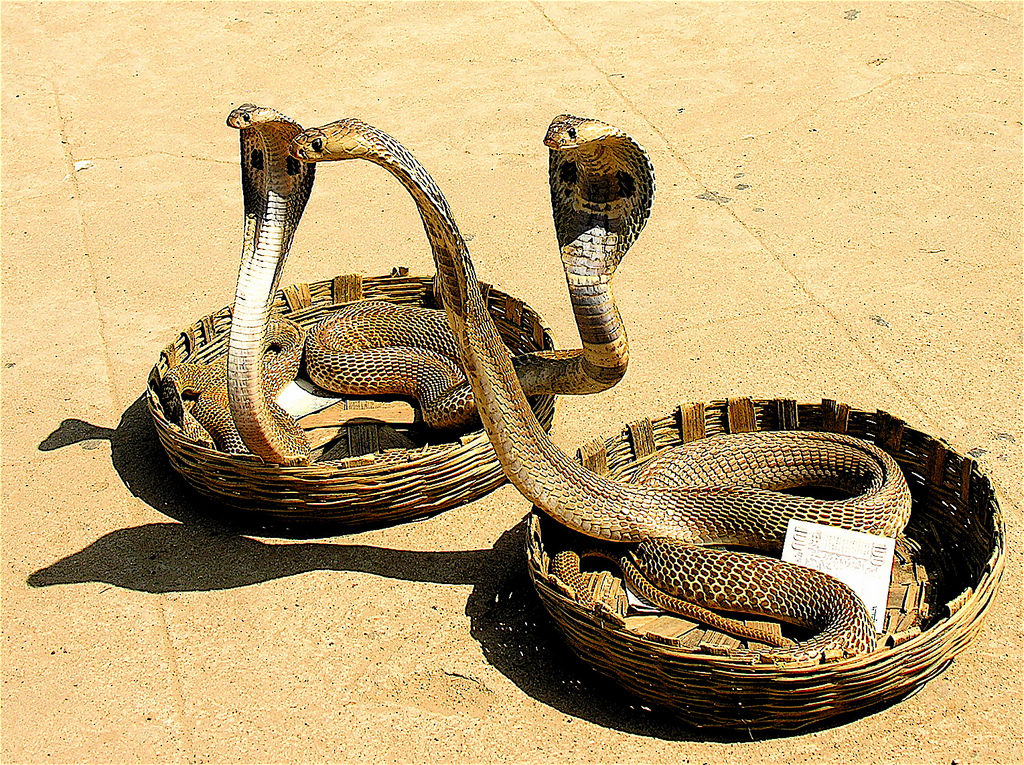
23. Cobras are very intelligent and they’re quick learners. They quickly learn which areas they have to avoid due to danger.
24. Spitting cobras refers to one of several species that can spit or spray venom from their fangs. They have incredible accuracy at spitting venom directly into the eyes of their victims.
25. They are the only snake that can spit its venom.
26. Some cobras pretend they’re dead by convulsing and then lying completely still until a predator has passed.
27. All cobra species are able to kill a person from one bite, however, they will only attack if they feel threatened.

